Understanding your customers is the foundation of a successful business. For years, companies relied on gut feelings and broad market research. Today, we have something far more powerful: data. By analyzing customer data, you can move from guessing what people want to knowing what they will do next. This allows you to create better products, deliver personalized experiences, and build lasting loyalty.
Predicting customer behavior isn’t about having a crystal ball. It’s about using the information you already have to make smart, informed decisions. This guide will show you how to harness data to understand your customers on a deeper level and prepare your business for success in 2026 and beyond.
We will explore practical steps to collect and analyze data, look at real world examples, and provide you with actionable takeaways you can implement right away.
What is Predictive Customer Behavior Analysis?
Predictive customer behavior analysis is the process of using historical data, statistical algorithms, and machine learning techniques to identify the likelihood of future outcomes. In simpler terms, it’s about looking at what your customers have done in the past to predict what they will do in the future.
This process helps you answer important business questions like:
- Which customers are most likely to make another purchase?
- Which users might stop using your service?
- What products or services will be in high demand next quarter?
- Which marketing message will resonate most with a specific customer group?
By anticipating these actions, you can be proactive instead of reactive. You can offer a timely discount to a customer at risk of leaving or recommend the perfect product before they even start searching for it.
The Data You Need to Get Started
You don’t need massive datasets to begin. Many businesses are already sitting on a goldmine of information. The key is to collect it, organize it, and make it work for you.
1. Transactional Data
This is the most direct data you have. It includes purchase history, order frequency, average order value, and the types of products or services bought. This information tells you exactly what your customers value and how they spend their money.
2. Website and App Engagement Data
How do people interact with your digital properties? Tools like Google Analytics can provide a wealth of information. Look at metrics such as pages visited, time spent on each page, click through rates, and the path users take to conversion. This data reveals what content captures their attention and where they might be running into problems.
3. Customer Service Data
Your support tickets, live chat logs, and call center records are filled with valuable insights. These interactions show you your customers’ pain points, questions, and feedback in their own words. Analyzing this data can help you improve your products and customer service processes. At MoDuet, our own content marketing services often begin by analyzing customer feedback to find common questions we can answer.
4. Demographic and Psychographic Data
Demographic data includes age, gender, location, and income. It helps you understand who your customers are. Psychographic data goes deeper, looking at their interests, values, and lifestyle. You can gather this information through customer surveys, feedback forms, and third party data sources.
A Practical 4 Step Guide to Predicting Customer Behavior
Once you have your data, you can start the process of turning it into predictions. Here’s a simple framework to follow.
Step 1: Define Your Goal
What do you want to predict? A clear objective is crucial. Without one, you’ll be swimming in data with no direction. Start with a specific business question.
- Bad example: I want to know more about my customers.
- Good example: I want to identify customers who are likely to stop their monthly subscription in the next 60 days.
This clear goal will guide your entire analysis.
Step 2: Consolidate Your Data
Your data likely lives in different places: your CRM, your e-commerce platform, your email marketing tool, and your analytics software. The next step is to bring it all together. A centralized database or a customer data platform (CDP) can unify your information, creating a single view of each customer. This unified profile is essential for accurate predictions.
Step 3: Analyze and Build a Model
This is where the prediction happens. You can start with simple methods before moving to more complex ones.
- Segmentation: Group customers based on shared characteristics. For instance, you could create a “high value” segment of customers who have purchased frequently in the last six months. This group is likely to buy again.
- Regression Analysis: This statistical method helps you understand the relationship between different variables. For example, you could analyze how an increase in website visits from email campaigns correlates with a rise in sales. This helps you predict future sales based on planned email marketing activity.
- Machine Learning: For more advanced predictions, machine learning algorithms can analyze vast amounts of data to find subtle patterns. For example, an algorithm can identify the specific sequence of actions a user takes before they cancel a service. Many modern marketing platforms have these capabilities built in.
A great real world example is Netflix. The streaming giant uses sophisticated machine learning to predict what you want to watch. It analyzes your viewing history, the time of day you watch, and even the moments you pause or rewatch. This is why its homepage recommendations are so compelling.
Step 4: Act on Your Insights
A prediction is useless if you don’t do anything with it. The final step is to turn your insights into action.
- If you predict a group of customers is about to churn, create a targeted re engagement campaign with a special offer.
- If you predict a product will be popular next season, adjust your inventory and prepare your marketing campaigns.
- If you predict a customer segment will respond well to a certain message, personalize your email and ad copy for them.
Let’s look at Amazon. The company uses predictive analysis to power its “Frequently Bought Together” and “Customers who bought this item also bought” features. By analyzing purchase histories on a massive scale, Amazon can predict which products are complementary and present them to customers at the perfect moment, significantly increasing the average order value.
Preparing for the Future of Predictive Analysis
As we look toward 2026, technology will only make predictive analysis more accessible and powerful. The rise of artificial intelligence means that even small businesses can leverage tools that were once only available to large corporations.
To stay ahead, focus on building a data driven culture. Encourage every department, from marketing to product development, to use data when making decisions.
Start small. You don’t need a team of data scientists to begin. Pick one clear goal, use the data you already have, and take that first step. By turning information into insight, you can create better experiences for your customers and build a more resilient, successful business.
We Want To Talk To You About Your Marketing Goals.
Let’s Supercharge Your Online Growth!











